Chunari Chunari! Chunari Chunari! One thing that can be found in every Bhartiya nari’s closet!
Dupattas are no longer draped for 'laaj'. It's not a piece of cloth that must be worn with ethnic attire only. It is no longer a burden or a tag along without which girls were often forbidden to leave the house. In the twenty-first century, women consider dupattas as magical pieces of cloth that can immediately transform the entire look of any outfit. It has the power to add charm to any boring attire and make it look brand new. This underdog has seen several styles and appearance changes throughout the years. The dupatta is no longer considered only a salwar-kurta component. A dupatta may be worn with anything from jeans to sarees. As dupattas have been setting new standards for fashion, you should be aware of the different types of dupattas our rich Indian culture offers. Here are the top 10 traditional dupattas that you need-
1.Banarasi Dupattas - Banarasi Dupattas are made of silk. It was originally made with real gold and silver threads. This amazing handcraft originated in Varanasi, Uttar Pradesh. The Mughals, who worked on magnificent designs influenced by Persian architecture and Mughal gardens, finally spread it to the entire country. It's an absolute must-have in every woman's wardrobe. So pair your Banarasi dupatta with a belt! Yes! To keep your dupatta in place, try experimenting with a waist belt. Wear your dupatta over your shoulder, a bit below your waist. Then, take your belt and wrap it over the front of your dupatta. This Indo-western combo really can create an exquisite style.

2.Kantha Dupattas - The word "Kantha," which means "rags" in Sanskrit, refers to recycled antique materials used to create beautiful and unique clothes. Traditionally, only quilts, sarees, and dhotis were embroidered in the Kantha technique. It has evolved into a popular embroidery style that the Indian fashion industry uses on a wide range of modern outfits.
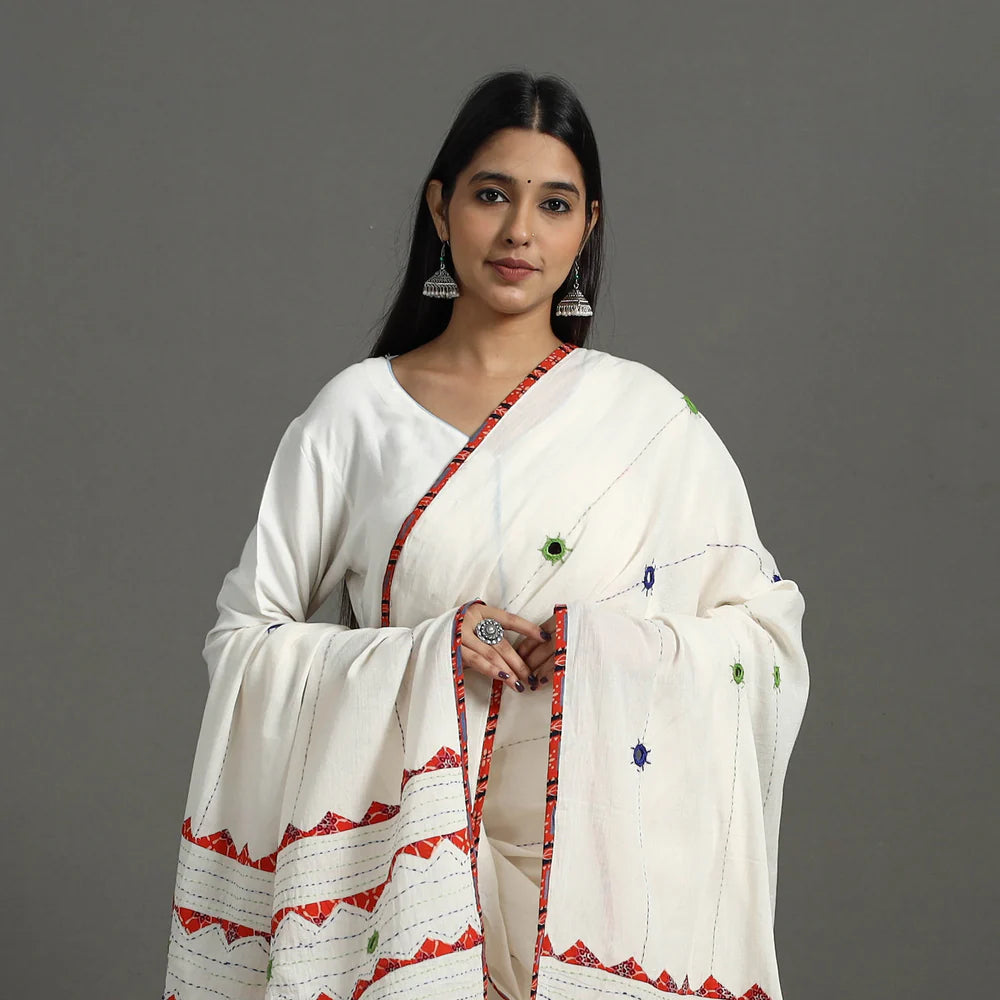
3.Ikat Dupattas - Ikat is a dyeing method in which yarn bundles are wrapped and colored to produce patterns on the fabric. The fact that this dying procedure occurs before the fabric is sewn makes it special. It symbolizes bohemian chic fashion in its purest form. You can style Ikat dupattas in the two-sided technique, which is popular on the runway. It's a wonderful way to hide sleeveless dresses or to draw attention to your lovely dupatta.
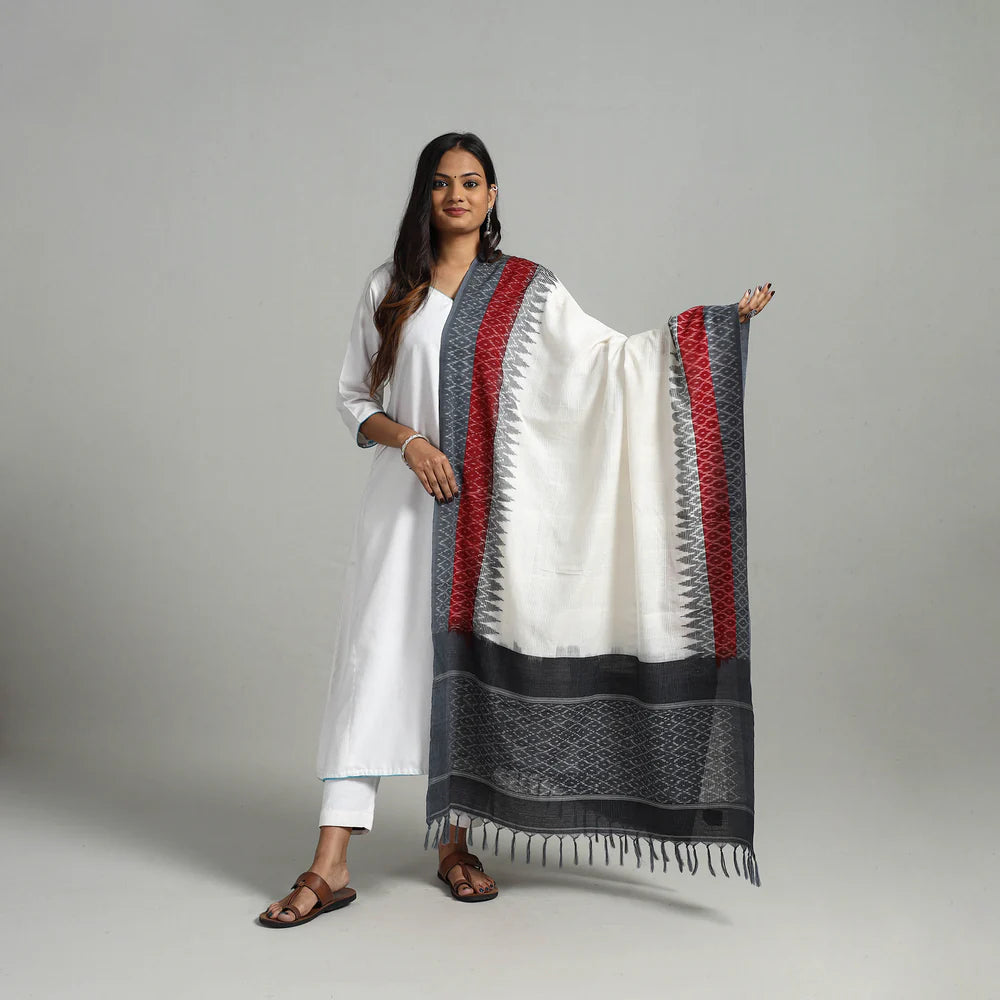
4.Chanderi Dupattas - Chanderi silk fabric originated centuries ago as a woven cloth that was much patronized by ancient kings. Its name originates from the historic Madhya Pradesh town of Chanderi. It is lightweight and has a lustrous look. Chanderi is an excellent option of fabric for creating lightweight traditional outfits. You must invest in colorful chanderi dupattas that can go well with kurta sets and can be accessorized with minimal effort for a glamorous look.
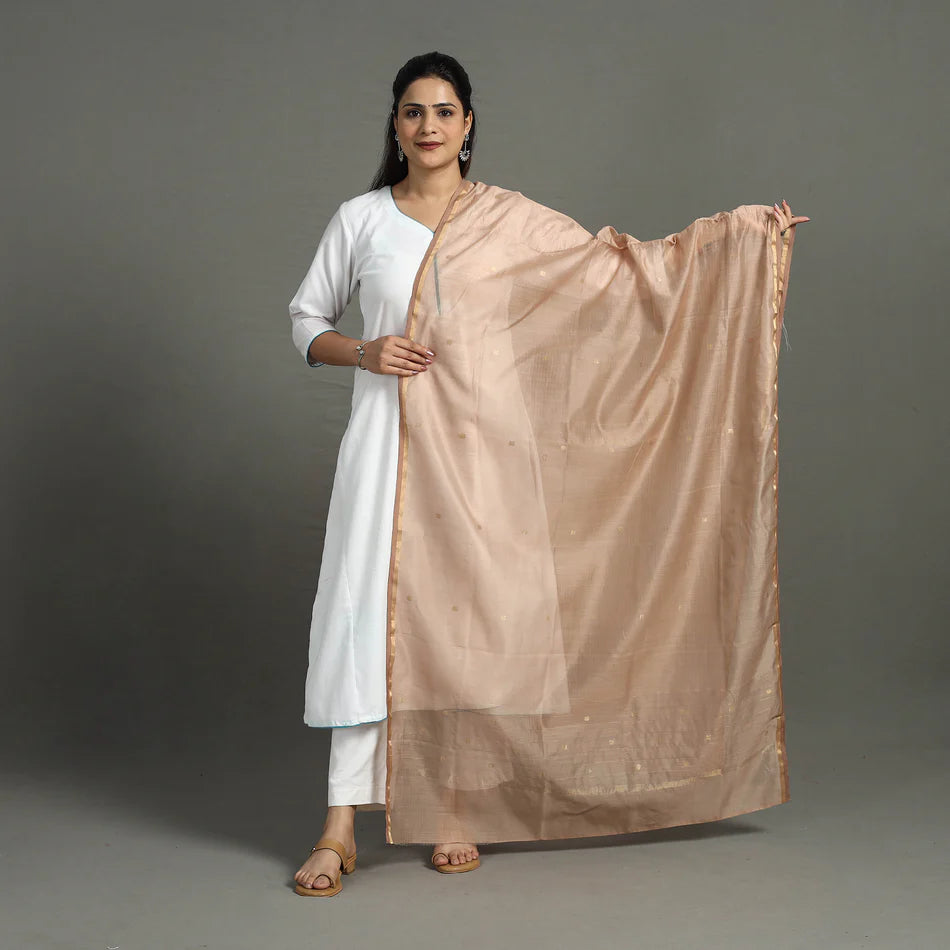
5.Phulkari Dupattas - The traditional Punjabi dupatta is known as phulkari which features detailed flower embroidery in geometric and other varieties of patterns. The embroidery is done with silk threads over cotton fabrics. As of today, these dupattas can be found in Chanderi, silk, and other materials as well. Draping a phulkari dupatta over the neck in a v shape is an easy and chic way to style it for everyday wear. A phulkari dupatta is great for a simple and casual look. It has amazing embroidery on its border, making it suitable for wearing with a salwar, long skirt, lehenga, or blacktop. For a small casual function, the Phulkari Dupatta style is commonly advised.

6.Bandhani Dupattas - A bandhej or bandhani dupatta will always be in fashion. These vibrant dupattas crafted with age-old tie-dye methods originated in Rajasthan and Gujarat. They come in a variety of designs and colors like- a single color, a two-toned shade, or a multi-colored dupatta. Initially, dyes were made using organic ingredients such as petals, stems, leaves, twigs, and fruits. Now normal dyes are used for the process. The speciality of this dupatta is that both men and women can wear it. To add glitz to their festive look, men prefer to drape colorful bandhani dupattas over plain kurtas or even wear them as turbans. Instead of wearing the dupatta over their shoulders, women can style it by draping it from the back of their arms.
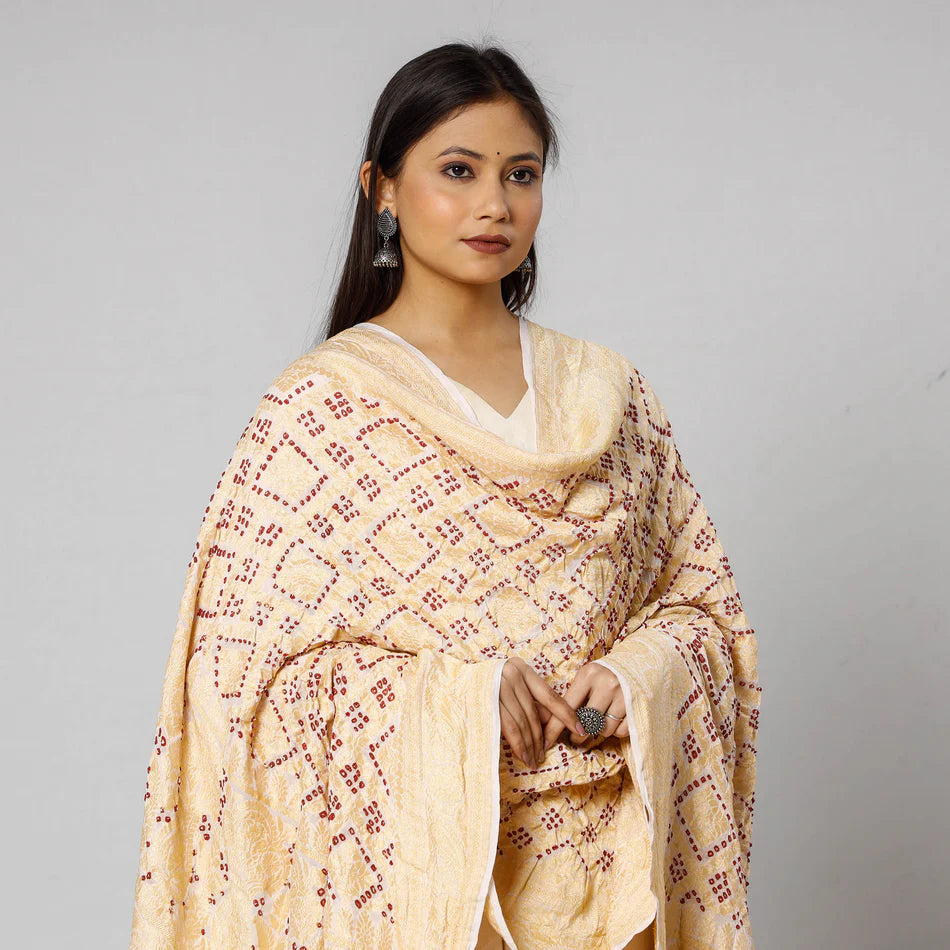
7.Kalamkari Dupattas - The exquisite designs of Kalamkari dupattas are hand-painted using natural dyes. Kalamkari craft dupattas are available in cotton, silk, and tussar. Kalamkari craft is as old as 3000 B.C. Kalamkari craft is full of rich art and history of meticulously crafted designs of animals, floral patterns, vines figures, and tales of Mahabharata and Ramanaya on textiles like Cotton, Mangalgiri Cotton, and Cotton Silk using a kalam (pen). An amazing traditional outfit can be made with palazzos, churidars, and a kalamkari dupatta. Try styling this beautiful dupatta by gathering the pleats on one side of the shoulder and securing it with a safety pin. A kalamkari dupatta can be used to create a magnificent and royal aesthetic.
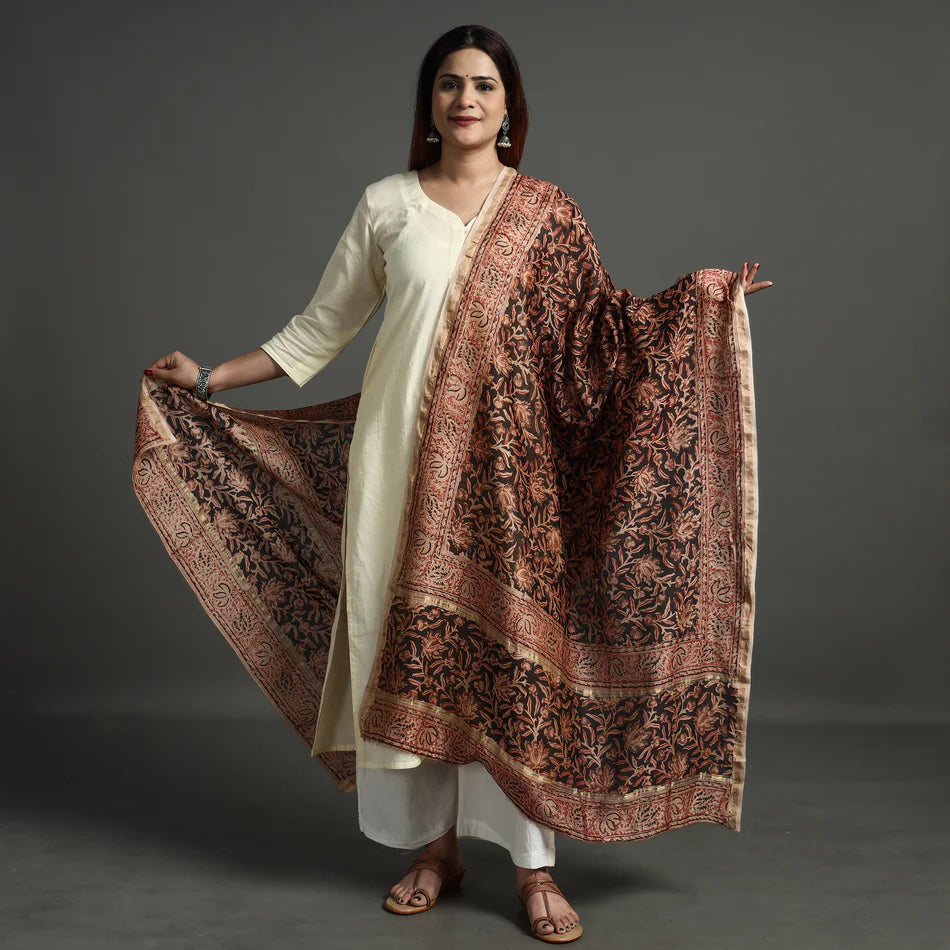
8.Jamdani Dupattas- Jamdani is one of the several ancient material weaving plants in the Bengal region. Jamdani is a handwoven process for producing designs in various shades and forms of cotton and silk. Jamdani, often known as muslin, is a handwoven cotton fabric. The Jamdani dupattas are renowned for their quality and comfort. The Jamdani designs typically consist of geometrical, botanical, and plant motifs. A popular way of styling Jamdani dupattas is by pairing them with a simple top or a kurta and accessorizing them with your favorite oxidized or silver jewelry.

9.Leheriya Dupattas - Leheriya is a well-known tie-dye method used in Rajasthan, India. It is essentially a resist dyeing technique where the cloth is knotted in certain places to produce intricate designs. The designs are based on the naturalistic patterns created by the breeze blowing across the dunes of Rajasthan. "Leher" is the Rajasthani term for waves. Cotton, georgette, and chiffon are some of the materials that leheriya dye is most normally used on because of their fragility. Leheriya dupattas are worn with tunics, Kurtis, shararas, and Anarkali. These bright colors and distinctive pattern dupattas are for every occasion.
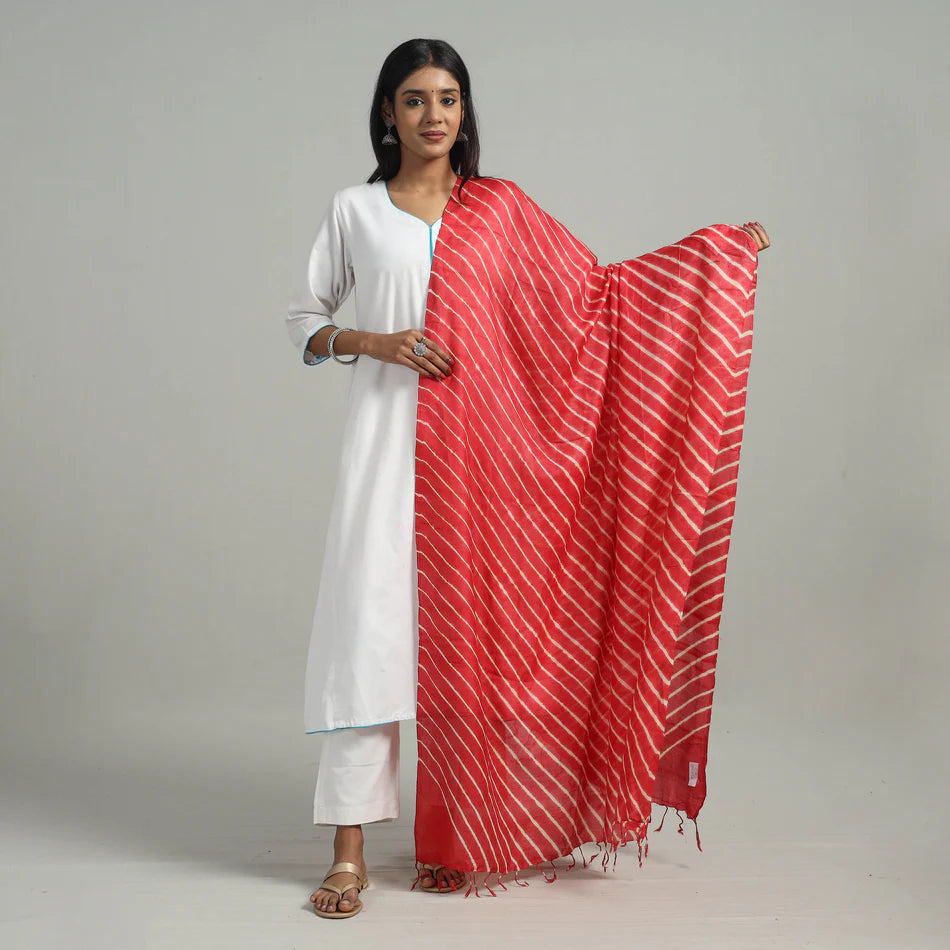
10. Ajrakh Dupattas - The term "Ajrak" stems from the Arabic word "Azrak," which means "blue” and the primary color used in Ajrak printing is blue. The process of making the cloth includes sixteen steps, including washing, dying, printing, and drying, and each of these steps takes one whole day. It's an art of block printing, and Ajrakh colors are so vibrant that they do not fade even if the dupatta ages. For small celebrations and events, a solid-colored dupatta with exquisite motifs may be ideal. You can wrap the dupatta like a scarf to give it a fresh look by draping it in edgy designs. Ajrakh dupattas add sophistication and can give a show-stopper look. Go get your Ajrakh print dupattas in various shades of blue, maroon, black, and indigo from iTokri!
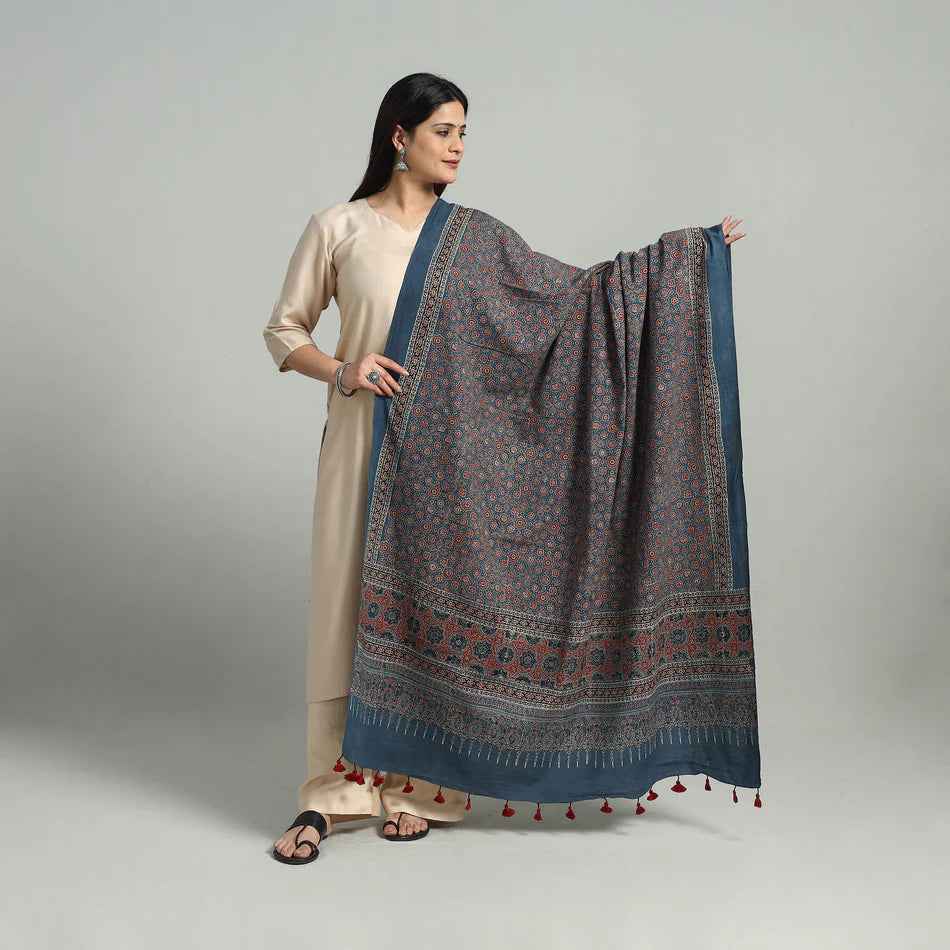
Add these beautiful dupattas to your collection, and we bet you'll never be tired of wearing your ethnic clothes again - there'll be so much to experiment with! iTokri brings you traditional Indian handicrafts and the culture that influenced them. Go check them out for the lovely handicraft products.
Blogs you might also like:
Maharastrian Tribal Art - Warli Paintings
The Khatri family, who practices Rogan Art
Chitrika Artisan Producer Company - Crafting Collective Gain
REFERENCES
https://bit.ly/3Dm7kjY
https://en.wikipedia.org/wiki/Phulkari
https://textilelearner.net/significance-of-dupatta-in-fashion-trending/
https://www.couponraja.in/theroyale/dupatta-a-statement-of-style/
https://www.dsource.in/gallery/ajrakh-printing-products
https://bit.ly/3U9MNoM
https://bit.ly/3BjtlNL
https://craftatlas.co/crafts/bandhani
 Verified Purchase
Verified Purchase




















































Leave a comment (all fields required)